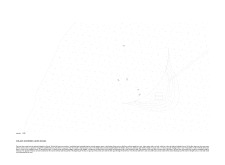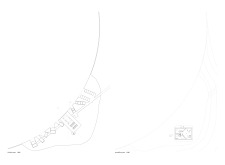5 key facts about this project
This project illustrates a commitment to sustainability and adaptability, employing an architectural language that resonates with local traditions while integrating modern technologies. The buildings are designed with flexibility in mind, featuring movable structures that allow for reconfiguration according to visitors’ needs. This unique approach enhances the guest experience, enabling individuals or groups to tailor their accommodations based on personal preferences or environmental conditions. The integration of communal and private spaces within the layout further promotes a sense of community among guests while offering the necessary privacy often sought in a retreat setting.
Materiality plays a key role in the project, with an emphasis on locally-sourced components that resonate with tactile qualities and aesthetic values characteristic of Icelandic architecture. Predominantly, the design incorporates glass, wood, solar panels, and thermal insulation materials. Large glass panels and roof sections not only provide ample natural light but also facilitate an unparalleled view of the night sky, allowing guests to engage directly with the celestial displays that the region is famous for. Wood is utilized extensively, contributing to the warmth of the interiors while ensuring that the structures remain inviting and comfortable. The inclusion of solar panels underscores a forward-thinking approach to energy use, addressing the necessity for eco-friendly solutions in contemporary architecture.
An important consideration of the design is its spatial organization. The first floor comprises communal areas designed to encourage social interaction, offering spaces where guests can gather to share experiences. Private sleeping quarters are strategically positioned around these common areas, ensuring that while guests can engage with one another, quiet and tranquility are easily accessible. The second floor largely functions as a dedicated sleeping space, where the layout is optimized for comfort and connection to the outdoors, facilitating direct access to nature.
Notably, the architectural details enhance the project’s unique narrative. Each room is equipped with features that amplify guest experiences, such as direct outdoor access that reinforces the concept of seamless integration with the landscape. The architectural sections reflect a thoughtful consideration of the site's topography, presenting a design that respects the natural slopes and contours of the environment. This sensitive integration enables the buildings to blend into the landscape, reinforcing a sense of belonging and coherence with the surroundings.
The overall outcome of the Iceland Northern Lights Rooms project is a sophisticated model of contemporary architecture that draws inspiration from the locale while pushing the boundaries of traditional design paradigms. It highlights a commitment to sustainability, community, and the enhancement of user experiences, serving as a valuable contribution to the hospitality sector in the region. The combination of thoughtful design approaches, such as movable structures and extensive use of natural materials, positions this project as a significant exemplar of modern architectural practices.
For those interested in delving deeper into the intricacies of this design, including the architectural plans, sections, and details that guide its conception, further exploration of the project’s presentation is encouraged. Engaging with these elements will offer valuable insights into the architectural ideas that shape this unique accommodation in Iceland.


























